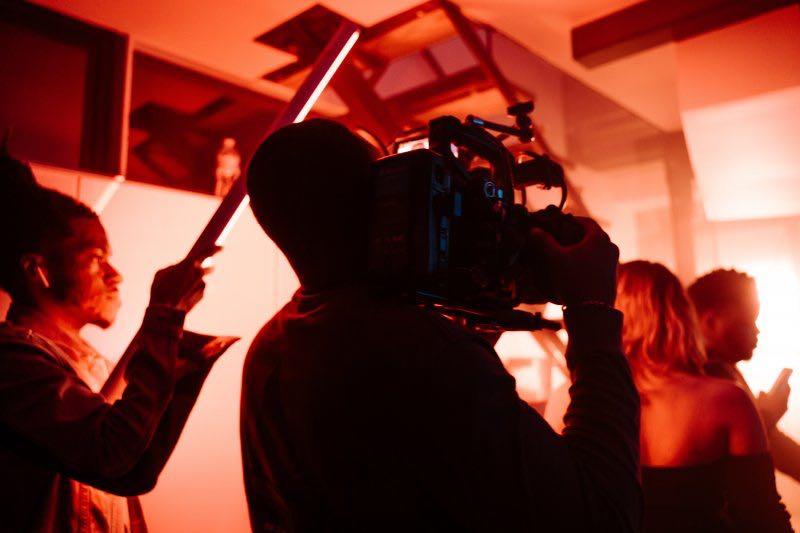The job of an actor is to tell a story. Generally, that story is about the journey of a specific character with the confines of a larger story. So, how do we do that? How do actors feel the moment? How do we take a moment that was conceived in a writer’s head and make an audience feel that it is alive?
Let’s Look at an Example from “A Chorus Line”
There is a song in the musical, A Chorus Line about this. The character, Diana Morales, is in an acting class and the teacher asks her what she is feeling during an exercise. She honestly tells the teacher that she didn’t feel anything. The rest of the song is about how the other students “feel” things, and she ultimately lies to stay in the class. Terrible teaching aside, this song is a perfect example of how this concept gets tossed around and hardly looked into.
Diana’s teacher, Mr. Karp, should have started the lesson with some guided visualizations. I talk about some of this in a previous post about pandemic acting lessons. Diana needed to be walked to the point where “feeling” things was even possible. Just throwing a student at a situation and expecting “feeling” without developing those skills is not fair to anyone.
Mr. Karp, and he may have done this outside of the song, needed to have the entire class visualize, in this case, the snow field that will soon be sledding in. Then, he should ask the students to create the rest of the scene with a series of questions like, “What does the sky look like?” “What does the ground look like? Do you see hills? Trees? Buildings?” These are the first steps into helping a scene become real for the actor and, in turn, real for the audience.
The Details Are Important
The next step is to practice creating environments in as much as you can come up with. During this process, the goal is as many rich details as possible. If you think you have created as much as there is, ask questions about the things that you have created. If you see hills, does anything live in those hills? If it is raining, how long has it been raining? If it is hot, how dry is it? It’s best at this point to stay away from creating people. That comes later.
After you are very good at creating an environment with copious amounts of rich details, place yourself in the environment, then create how you feel. It is important to pay close attention to how these emotions fit into the environment. This takes concentration and practice. Like all of the other steps, don’t do anything more until you are adept at creating the emotions you are feeling.
This Skill Comes into Full View in Audition & Rehearsal Rooms
All the people behind the table are looking for is an actor that can commit to some choices. If you can show them that you can fully invest in a world in the few seconds before they make a decision, then you are a step ahead of the competition. While you may not get the part, the casting people will be thankful you did the work. They are always looking for a good show.
Casting Directors also have great memories, they remember people who do their work. This exercise will also bear fruit in the rehearsal room. There is no set, no costumes, nothing to build the world, save maybe some chairs. There will be a piano if you are doing a musical. You will be asked to invest in a world that is still primarily on the page. Your job is to see it, react to it, and yes, feel it.
Here’s an Example for You…
There is a story about Micheal Redgrave, I think. He was in a play with Maggie Smith and Redgrave was rocking it out. Everyone in the cast was watching him put in the best performance of his career. Redgrave was totally invested in the world around him. At the end of that performance, a crying audience gave Redgrave the most deserved standing ovation of his professional career. After the curtain came down he stormed off to his dressing room. The rest of the cast and crew could hear him tearing his dressing room apart. Maggie Smith, a friend of his, was brave enough to walk in to check on him.
She found this brilliant artist who just put on the best performance of his entire life sobbing in the shambles that was an immaculate dressing room minutes before. Maggie Smith asked him what he was doing. She extolled the amazing points of his performance and it just seemed to make him worse. He looked at her through his tears and said, “I know it was amazing. I just have no idea how I did it!”
Every actor strives for the kind of committed performance that transcends art and becomes truly alive. I am not telling you that these exercises will turn you into a better actor than Micheal Redgrave. I am telling you that these exercises will help you get to the point where you are capable of it. The work is hard. The rewards are subtle. This is the life we choose.
Diana Morales, Micheal Redgrave, and you all have something in common. You are all here to tell stories, and that might be the coolest group ever.
Stephen Scarlato

